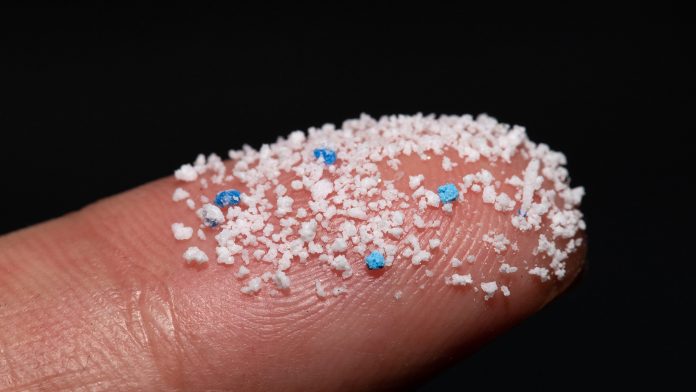Researchers at Waseda University have explored the path of airborne microplastics as they circulate in the biosphere, adversely impacting human health and the climate.
Airborne microplastics are present in clouds, which contaminate nearly everything we eat and drink via ‘plastic rainfall’.
Whilst most microplastic studies have focused on aquatic ecosystems, few have examined their impact on cloud formation and climate change.
The first-of-its-kind study, ‘Airborne hydrophilic microplastics in cloud water at high altitudes and their role in cloud formation,’ is published in Environmental Chemistry Letters.
Why should we study airborne microplastics?
“Airborne microplastics in the free troposphere are transported and contribute to global pollution.
“If the issue of plastic air pollution is not addressed proactively, climate change and ecological risks may become a reality, causing irreversible and serious environmental damage in the future,” explained Hiroshi Okoch, a professor at Waseda University and lead author of the study.
Microplastics are less than 5mm in size. These tiny bits of plastic are often found in industrial effluents or form from the degradation of bulkier plastic waste.
Research shows that large amounts of microplastics are ingested or inhaled by humans and animals and have been detected in multiple organs such as the lungs, heart, blood, and placenta.
Ten million tons of these plastic bits end up in the ocean, are released with ocean spray, and find their way into the atmosphere, creating harmful airborne microplastics.
Projections for future impacts on climate change
To investigate the role of airborne microplastics in the troposphere and the atmospheric boundary layer, the team collected cloud water from the summit of Mount Fuji, the south-eastern foothills of Mt. Fuji (Tarobo), and the summit of Mt. Oyama – regions at altitudes ranging between 1300-3776 metres.

Using advanced imaging techniques such as attenuated total reflection imaging and micro-Fourier transform infrared spectroscopy (µFTIR ATR imaging), the researchers determined the presence of microplastics in cloud water and examined their physical and chemical properties.
They identified nine different types of polymers and one type of rubber in the airborne microplastics detected. Notably, most of the polypropylene detected in the samples was degraded and had carbonyl (C=O) and hydroxyl (OH) groups.
The Feret diameters of these microplastics ranged between 7.1 – 94.6 µm, the smallest seen in the free troposphere. Moreover, the presence of hydrophilic polymers in cloud water was abundant, suggesting that they were removed as cloud condensation nuclei.
What could happen in the future?
These findings confirm that microplastics in clouds play a crucial role in rapid cloud formation, which may eventually affect the overall climate.
Accumulating microplastics in the atmosphere, especially in the polar regions, could lead to significant changes in the ecological balance of the planet and a severe loss of biodiversity.
Okochi concluded: “Airborne microplastics are degraded much faster in the upper atmosphere than on the ground due to intense ultraviolet radiation, which releases greenhouse gases and contributes to global warming.
“As a result, the findings of this study can be used to account for the effects of atmospheric microplastics in future global warming projections.”





